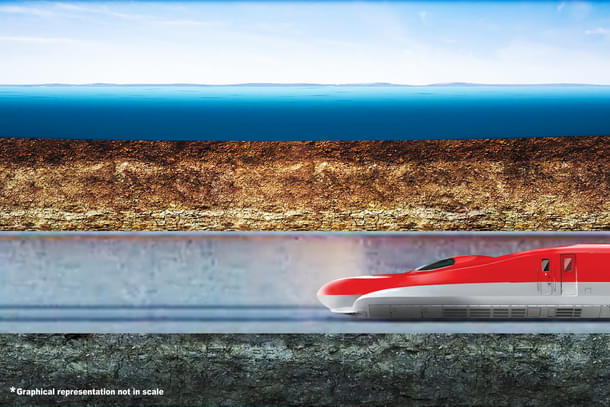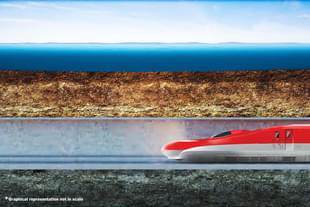Infrastructure
Mumbai-Ahmedabad Bullet Train: Work On 21-Km Tunnel Gathers Steam With 394-Metre ADIT Breakthrough
Swarajya Staff
May 27, 2024, 01:23 PM | Updated 01:22 PM IST
Save & read from anywhere!
Bookmark stories for easy access on any device or the Swarajya app.


In a significant milestone for the Mumbai-Ahmedabad Bullet Train Project, the Additional Driven Intermediate Tunnel (ADIT) at Ghansoli has been successfully excavated.
The 394-metre-long tunnel was completed in a record time of six months. This crucial achievement will expedite the construction of the 21-kilometre tunnel between Bandra Kurla Complex (BKC), Mumbai, and Shilphata, Thane in Maharashtra.
Union Railway Minister Ashwini Vaishnaw shared a one-minute video on X (formerly Twitter), showcasing the tunnel breakthrough.
Big milestone achieved for undersea tunnel in Bullet train project. pic.twitter.com/jAthXHPN4C
— Ashwini Vaishnaw (मà¥à¤¦à¥ à¤à¤¾ परिवार) (@AshwiniVaishnaw) May 26, 2024
The 26-metre-deep inclined ADIT will facilitate the construction of a 3.3-kilometre main tunnel using the New Austrian Tunneling Method (NATM), out of a total length of 5 kilometres. Work on this stretch of the main tunnel is expected to be completed in 14 months.
The ADIT will provide direct vehicular access to the main tunnel during construction and operation and has been equipped with adequate lighting, ventilation, and road access.
The Mumbai-Ahmedabad Bullet Train Project, overseen by the National High-Speed Rail Corporation Ltd (NHSRCL), has commenced the construction of the 21 km long tunnel including India’s first 7-km-long undersea tunnel.

The tunnel will be single-tube, designed to accommodate twin tracks for both up and down trains. Additionally, 39 equipment rooms will be constructed at 37 locations adjoining the tunnel location.
Utilising TBMs with a 13.6-metre cutter head diameter, significantly larger than the usual 5-6 metre diameter cutter heads employed in urban tunnels, the project aims to cover approximately 16 kilometres of the tunnel length using three TBMs, while the remaining 5 kilometres will be constructed using the NATM.
The tunnel will be approximately 25 to 57 metres deep from ground level, with the deepest point being 114 metres beneath the Parsik hill near Shilphata.
Three shafts at BKC, Vikhroli, and Sawli, with approximate depths of 36, 56, and 39 metres respectively, will facilitate the construction of the TBM-section. Additionally, an inclined shaft of 42 metres at Ghansoli and a tunnel portal at Shilphata will aid in constructing 5 kilometres of the tunnel using the NATM method.





